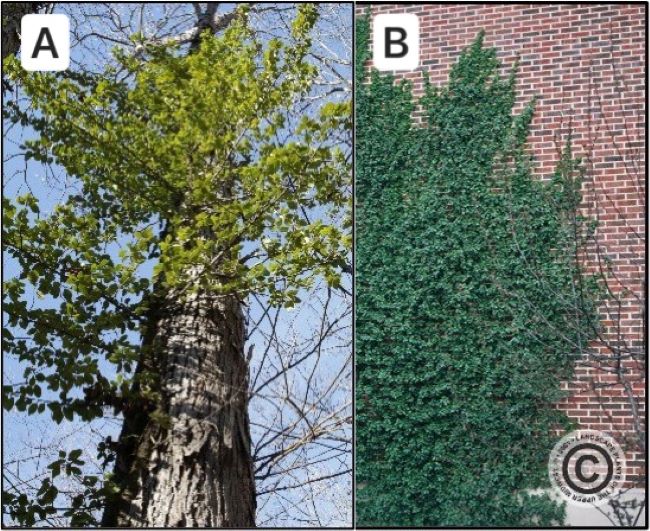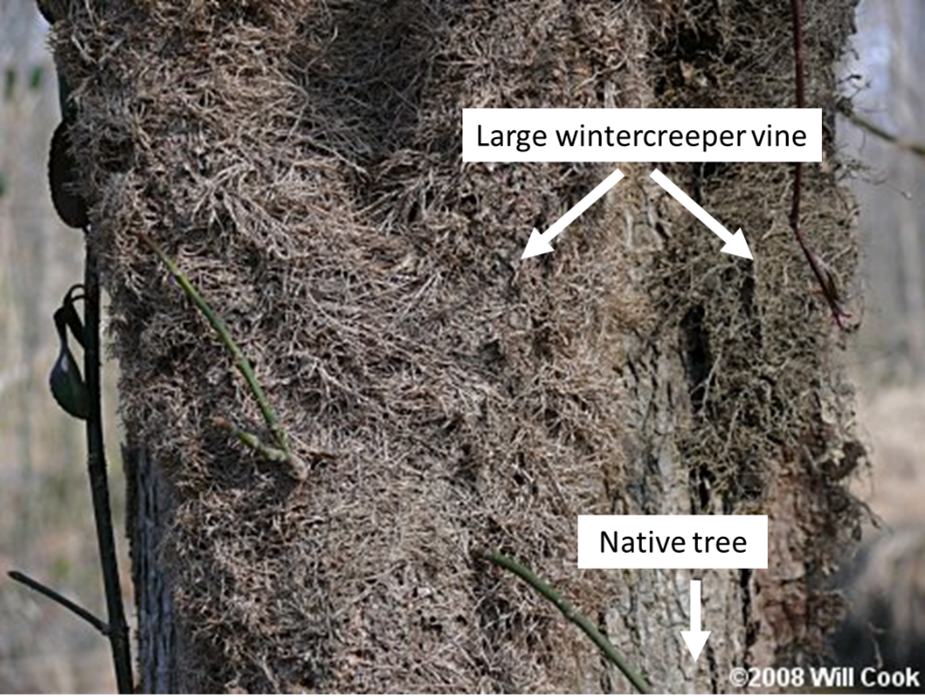Blog
Out of Sight, Out of Mind: The Invasive Vine No One Seems to Notice

by Danie Frevola, Conservation Apprentice
Wintercreeper (Euonymus fortunei) is found in all sorts of spots throughout Cincinnati- from the side of houses, to the side of highways; across the forest floor all the way up to the tree canopy. However, the vine is almost so common, that no one even seems to notice it. Though many people probably walk past this vine daily without spotting it, the impact it has on the environment does not go unnoticed.
Wintercreeper was introduced to the eastern United States for ornamental use. It's a woody vine that stays green all year, making it an attractive option for people looking to add some color to their yard during the grey winters.
However, wintercreeper did not stay as a landscaping plant for long; it quickly escaped landscaping and spread far and wide throughout neighborhoods and natural environments. Its success in escaping as a landscaping plant is attributed to its ability to spread rapidly by seed and by vegetative growth.
.png)
Vegetative growth is another term for clonal reproduction in plants. Roots of one wintercreeper plant can grow shoots for another wintercreeper plant, and that new plant is also able to produce seed. The seeds can then be spread by birds or by water. Birds will eat the fruit that contains the seed and then can travel miles away before the seed is pooped out. Similarly, if the seed falls into a stream it can travel long distances before it reappears on land and germinates.
In addition to being able to spread rapidly, wintercreeper is also a risk for native biodiversity because of its ability to ‘creep’ along the forest floor. As the vine spreads along the ground, it forms a dense ground cover that blocks sunlight from penetrating through. Without sunlight, plants cannot create energy to grow and seeds from trees cannot germinate. Additionally, once wintercreeper reaches a tree trunk, it can begin to climb the tree. Though the vine does not strangle the tree like some other invasive vines, it can grow into the canopy and block sunlight from reaching the tree’s leaves. Over time, this could eventually kill the tree since it will not be able to create energy to survive.

Wintercreeper’s ability to rapidly spread and its negative impact on biodiversity earns it the title “invasive species”. Since it is invasive, it is important that we manage the species so the native vegetation is not outcompeted. We do this at Cincinnati Nature Center by cutting the vine at the base of the tree (sometimes we need a chainsaw because the vine is so large!) and spraying it with herbicide.
Using a spray bottle, we spray the wintercreeper stump using a 20% concentration of glyphosate (brand name: Rodeo). This same practice can be done in your backyard. If you do not have herbicide, or do not feel comfortable using it, you can also pull the vine up from the roots. However, depending on how long wintercreeper has been in your area, this could be an intensive process and will need to be done for multiple years as the vine may still spread by vegetative growth.